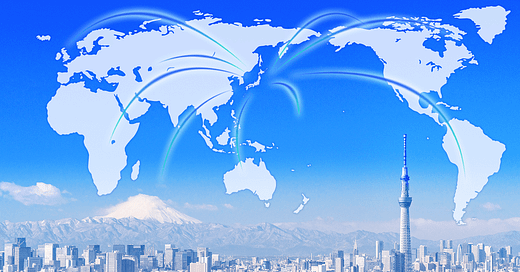"Mega-projects often promise the moon but deliver a crater." Me
In the late 20th century, Japan embarked on an ambitious international infrastructure strategy known as the “Japan Inc.” era. By pouring billions into Southeast Asia’s roads, ports, and power plants, Japan sought to secure resources, expand its influence, and integrate regional economies into its supply chain. During the height of Japan Inc., major corporations like Mitsubishi, Sumitomo, and Mitsui worked in close coordination with the Japanese government to finance and construct vast infrastructure projects across Asia. Their investments helped drive economic growth, but they were also deeply tied to Japan’s bubble-era economic expansion. When Japan’s economy collapsed in the 1990s, many of these overseas projects became financial burdens, forcing retrenchment and leaving a legacy of incomplete or underutilized infrastructure. Political backlash in recipient countries, fueled by concerns over foreign dependency and economic sovereignty, further contributed to Japan Inc.’s decline.
Japan Inc. was ultimately a victim of its own excesses. The overextension of credit, risky financial speculation, and an overreliance on foreign markets left the country vulnerable. When Japan’s asset bubble burst in the early 1990s, economic stagnation followed, and its grand infrastructure investments abroad became liabilities. What was once seen as an unstoppable force in global development quickly crumbled under the weight of bad debt, wasted capital, and political pushback.
Today we see a strikingly similar trajectory with China’s Belt and Road Initiative (BRI).
When China launched the Belt and Road Initiative (BRI) in 2013, it was nothing short of a geopolitical spectacle. At the time, Beijing had one goal: to reshape the global economic order in its image. By investing $1 trillion into massive infrastructure projects across 60+ countries, China sought to secure its place as the world’s economic linchpin. From ports to railways, highways to energy pipelines, BRI was the connective tissue that would tie the East and West together, fueling global trade and fortifying China’s influence.
But today, barely a decade into this grand vision, the reality is far bleaker. The initiative is unraveling faster than anyone could have predicted, and the once-promised “win-win” scenario now seems more like a colossal gamble.
In theory, the BRI was a masterstroke. It offered developing nations access to the infrastructure they desperately needed, while China would secure trade routes, and resources to feed its own economy, and markets for it’s exports. There was just one problem: the numbers didn’t add up. In its rush to cement global influence, China became the lender to the world, offering massive loans with few strings attached. But what Beijing overlooked was the volatility of the countries it was lending to.
Take Sri Lanka, for example. The island nation’s infamous Hambantota Port was built with Chinese funding—but when Sri Lanka defaulted on its debt, China took control of the port for 99 years, triggering protests and political instability. This was just the first domino to fall. In reality, the port hasn’t lived up to its economic promises—traffic is sparse, and local populations have raised concerns over the loss of sovereignty and environmental degradation. This situation was supposed to be an example of mutually beneficial infrastructure development, but instead, it has become a cautionary tale.
Today, Sri Lanka is far from alone. Pakistan’s $62 billion China-Pakistan Economic Corridor (CPEC) is mired in delays, cost overruns, and accusations of Chinese exploitation. With Pakistan facing a looming fiscal crisis, the promises of prosperity that BRI offered are quickly fading. In Africa, Chinese-built railways sit unused, monuments to the high hopes of a bygone era. Even countries like Kenya, which were initially thrilled with Chinese financing, are now questioning the long-term benefits of these projects as debt continues to mount. And now, as reports pile up about the growing debts of BRI nations, the question is no longer if these countries will default, but when.
At the heart of many BRI struggles is the energy sector. China has poured billions into power plants, pipelines, and transmission networks, yet these projects often fail to deliver long-term economic stability. The biggest issue? Overcapacity.
Keep reading with a 7-day free trial
Subscribe to The Monetary Skeptic to keep reading this post and get 7 days of free access to the full post archives.






